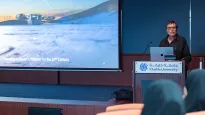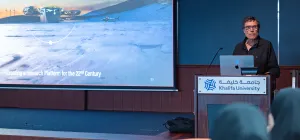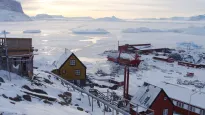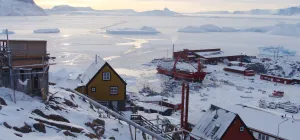Keeping up momentum in Marrakesh: climate change COP22
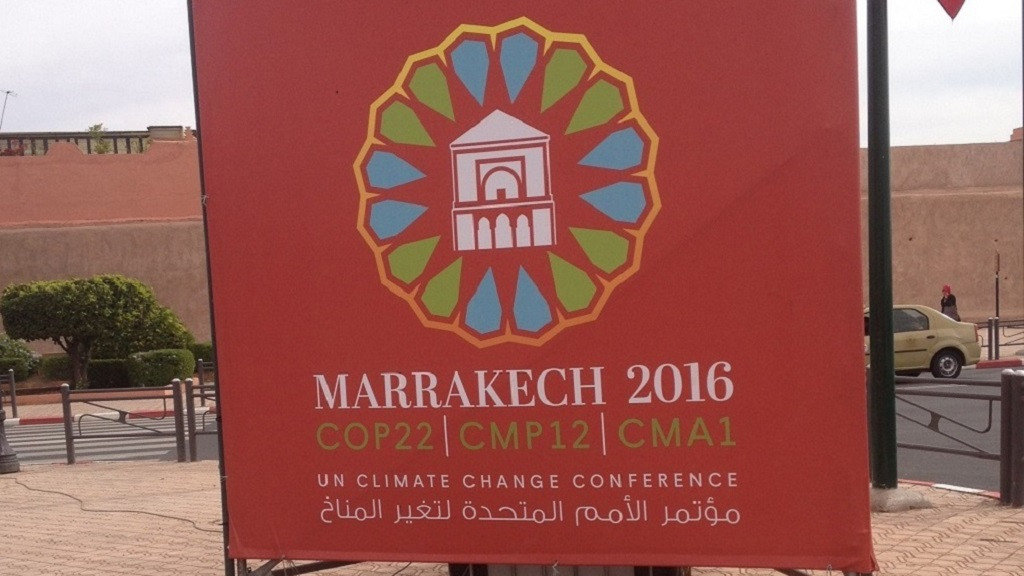
The 2016 annual UN Framework Convention on Climate Change conference “COP22” started only a few days after the Paris Agreement, the international agreement which aims to keep global temperature rise to well below 2 degrees Celsius above pre-industrial levels and pursue efforts to limit the rise to 1.5 degrees, entered into force. At the time of writing in mid-November, 112 out of 197 countries, including the USA, China, India and the European Union, have ratified this agreement.
Time for action
So, COP22 promised to be a time for action: focusing on what had and could be done and planning the best way forward. Government negotiators from around the world arrived in Marrakesh, Morocco, for two weeks of talks, whilst representatives from non-government organizations and interested parties were welcomed to the conference to act as “observers”, providing advice, networking and sharing knowledge. The International Polar Foundation was fortunate to be one of these organizations.
Meeting the world
Our display booth, featuring the zero emission Princess Elisabeth Station, was located between the equally fascinating Algerian “Deserts du Monde” and Plymouth Marine Laboratory “Ocean Under Stress” in the blue zone exhibits and side events area. Students, politicians, business people, scientists, conservationists and campaigners from around the world stopped by on their way to and from meetings and side events. We were honoured with a brief visit from the Chairman of the Intergovernmental Panel on Climate Change (IPCC), Hoesung Lee and his South Korean colleagues.
We also ventured out to explore the conference site: there were pavilions for many countries with displays, events and discussions in each area. The Indian pavilion had unique “aqua curtains” – shapes drawn in water behind an LED screen. The huge screens with vibrant scenes and wooden trees in the Africa pavilion were impressive and the USA Center had a “hyperwall” used by NASA to show key satellite information about our climate and environment – we saw an excellent talk on atmospheric composition and air quality. Over in the green “innovation” and “civil society” zones, there were more people to meet, talks, discussions, artisan products, singing and artwork. A feast for the mind and the senses!
What was everyone talking about?
There was a lot of talking – formal meetings, informal discussions, press conferences and presentations. We went along to presentations on climate change education, an update on the IPCC’s programme, the launch of the Emissions Gap Report and a session on innovation, where one of the products described was a carbon fibre material which removed carbon dioxide from the atmosphere during its production. An award ceremony chaired by Solar Impulse co-pilot Bertrand Piccard was held by the UN Momentum for Change to celebrate “lighthouse activities”, activities that are paving the way toward a resilient, low-carbon future. You can hear about some of the projects here and watch the video competition winner here.
Will the Paris Agreement be Trumped?
Following the US election result, many people were concerned that the incoming president could derail the Paris Agreement. However, Secretary John Kerry gave an impassioned speech, which we watched in the US Pavilion, stating that the Paris Agreement is bigger than any one country or head of state. And the more we saw at the conference, the more we realised that determined action is being taken at all levels – by cities, regions, businesses, coalitions and alliances, building momentum.
Positive outlook
At the end of the conference a 2050 Pathways Platform was launched to help countries, cities, companies and organisations to develop long-term, deep decarbonisation strategies through sharing resources, knowledge and experiences and collective problem solving. The Marrakech Action Proclamation issued on the same day, referred to “extraordinary momentum on climate change worldwide, and in many business multilateral fora. This momentum is irreversible - it is being driven not only by governments, but by science, and global action of all types at all levels."
Fiji will preside over the next UN climate change conference COP23, which will take place in Bonn, Germany in 2017. We hope to see a lot more progress before then!
Download


















